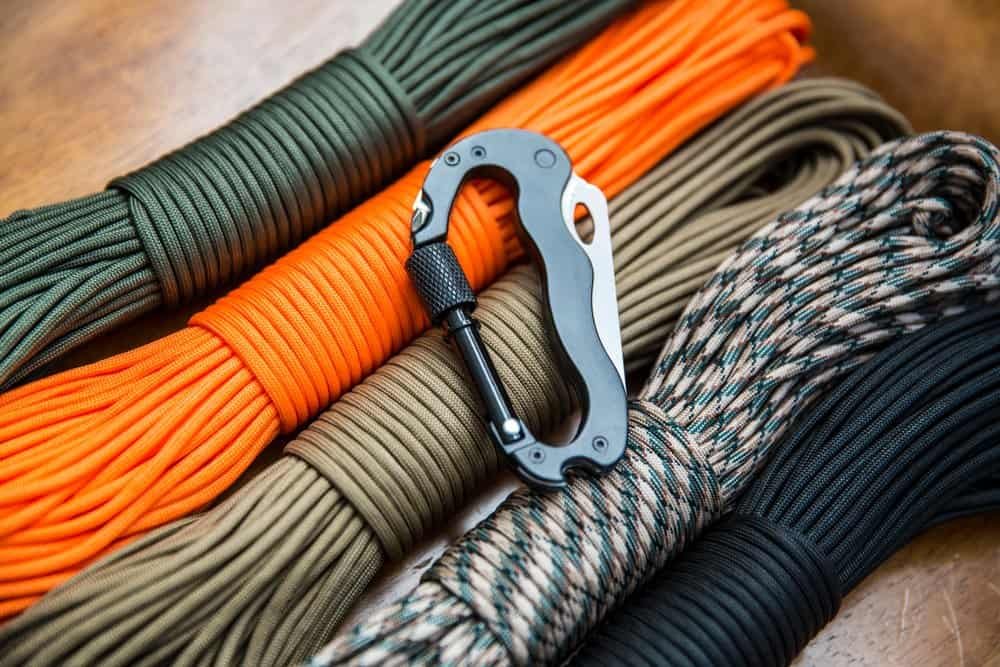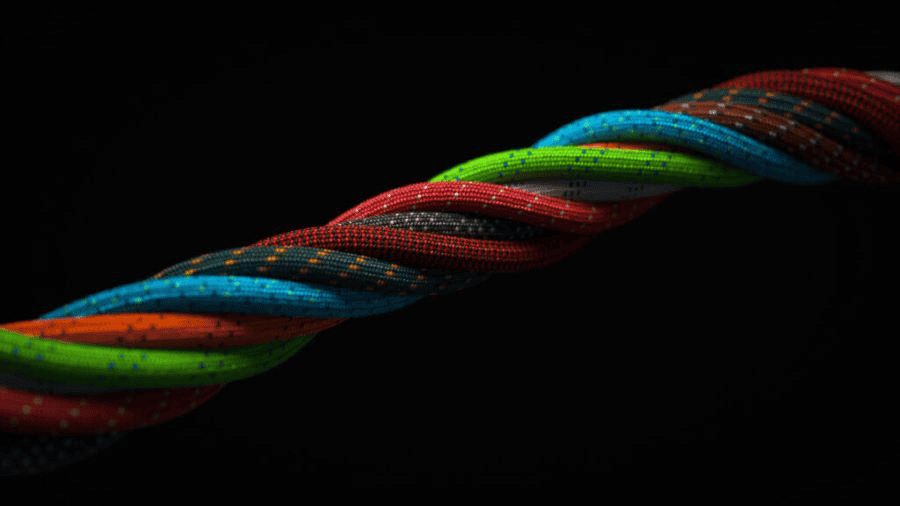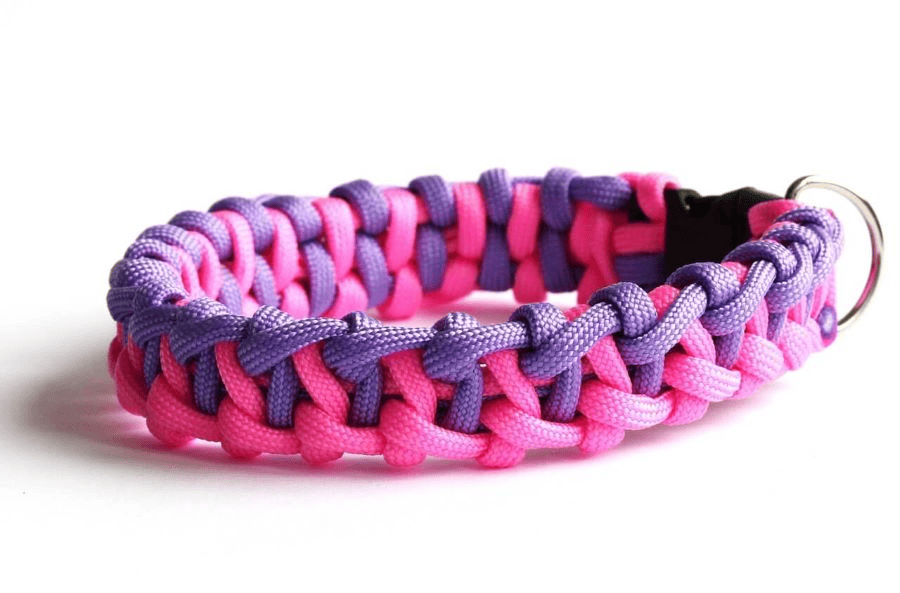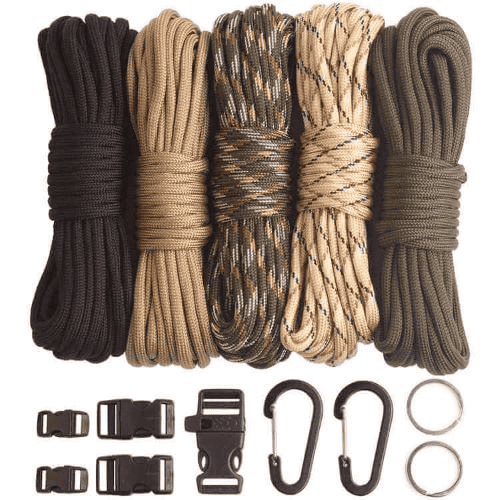
Dive into the world of paracord, and you’ll find a symphony of strength, versatility, and questions. Among the most debated: does it stretch? It’s not just a query for the curious but a pivotal point for adventurers, crafters, and survivalists alike. Let’s unravel this mystery, exploring the give and take of this beloved cord.
Unraveling Paracord – A Brief Overview

1. Historical Context
Paracord’s journey began during World War II, designed as parachute suspension lines. Post-war, its versatility was recognized, transitioning from military utility to civilian multifunctionality.
2. Composition and Structure
At its core, paracord boasts a unique design. An outer sheath, woven for protection, encases multiple inner strands. This dual structure offers both durability and adaptability, suitable for varied tasks.
3. Types and Specifications
Paracord varieties abound, with the paracord 550 being most renowned for its 550-pound tensile strength. Other types cater to specific needs, differing in thickness, strength, and elasticity.
4. Practical Applications
Paracord’s uses are vast. From crafting survival tools like snares and shelters to everyday applications like lanyards and belts, its versatility is unmatched in the realm of cords.
5. Braiding and Crafting
The world of paracord braiding is a mesmerizing blend of tradition, skill, and artistry. From the foundational cobra weave, reminiscent of serpentine elegance, to the intricate trilobite pattern, which echoes ancient fossils, each design tells a story. As crafters weave, twist, and knot, they’re not just creating functional items but also expressing personal narratives and styles. Workshops and online tutorials have further fueled this craft’s popularity, making it a beloved hobby for many. For those eager to dive deeper into this fascinating world, check out this comprehensive guide on paracord braiding techniques.
6. Safety and Precautions
Paracord, despite its impressive strength, has its limitations. It’s paramount to understand that while it offers robustness in many scenarios, it shouldn’t replace specialized ropes or cords in critical situations, such as climbing. Furthermore, when crafting, it’s essential to ensure that the ends are securely sealed to prevent fraying. Regular inspection for wear and tear, especially if used outdoors, can prevent unexpected breakages and ensure user safety.
To Stretch or Not to Stretch

1. Grasping the Essence of Elasticity
Think of elasticity as a dance. It’s the rhythm of materials stretching out to embrace external pressures and then gracefully returning to their original form. Just like no two dances are the same, different materials have their unique twirls and spins, shaping how they endure and function in the grand performance of life.
2. Factors Influencing Stretch
Several elements dictate how much a material stretches. For paracord, its nylon composition makes it responsive to temperature changes. Additionally, the force applied and the duration of tension can also influence its stretchability.
3. Paracord’s Unique Composition
Paracord stands out due to its multi-strand inner core wrapped in a woven outer sheath. This design not only provides strength but also contributes to its specific stretch characteristics, balancing durability with flexibility.
4. Practical Implications
The stretch factor plays a pivotal role in paracord’s applications. For survivalists, a slight give can be beneficial in tasks like shelter building, while crafters might seek minimal stretch for consistent designs.
- Survival Scenarios: A bit of stretch can aid in absorbing shock or tension.
- Crafting: Consistency is key, so understanding and managing stretch is crucial.
5. Comparative Analysis
When pitted against materials like hemp or cotton, paracord’s nylon composition offers more elasticity. This relative flexibility makes it a preferred choice for tasks requiring both strength and a bit of give.
6. Mitigating Overstretch
To ensure paracord retains its shape and strength, it’s essential to avoid overstretching. Techniques include pre-stretching before use, ensuring even tension during crafting, and avoiding prolonged exposure to extreme conditions. For a detailed guide on how to properly care for and maintain its durability, refer to this expert article on preventing paracord overstretch.
7. Embracing the Stretch
The inherent elasticity of paracord isn’t just a feature; it’s an advantage in various scenarios. Understanding and leveraging this stretch can elevate its applications.
- Shock Absorption: In activities like climbing or securing loads, paracord’s stretch can act as a buffer, reducing the impact of sudden forces or shocks.
- Adaptability in Crafting: For crafters, a slight give in the cord allows for adjustments, ensuring the final product fits perfectly, especially in wearable items like bracelets or belts.
- Comfort Factor: Paracord’s elasticity can enhance the comfort of items like hammocks or wearable crafts, ensuring they aren’t too rigid.
Deep Dive – Different Types of Paracord

1. Historical Evolution
Paracord’s journey began with military parachutes in World War II. This durable cord quickly found favor beyond battlefields, evolving into a multifaceted tool cherished by civilians for various applications.
2. 550 Paracord
Dubbed the “universal cord,” 550 paracord boasts a tensile strength of 550 pounds. Its versatility spans survival scenarios to crafting projects. Its popularity has made it a staple in many outdoor kits. Learn more about 550 Paracord here.
3. Type I and Type II Paracord
These lighter-duty cords are less robust than their 550 counterpart but offer unique advantages. Ideal for crafting, they’re perfect for projects requiring less strength but equal finesse.
4. Shock Cord
This isn’t your typical paracord. Infused with elasticity, shock cords are perfect for tasks requiring a bounce-back effect, from bungee jumping rigs to securing fluctuating loads.
5. Reflective and Glow-in-the-Dark Paracord
Safety and visibility are paramount in certain scenarios. These specialty cords, whether reflecting light or glowing in the dark, ensure you’re seen, be it during nighttime adventures or emergencies.
- Reflective Paracord: Embedded with reflective tracers, it shines brightly when light hits it.
- Glow-in-the-Dark Paracord: After being charged by light, this cord emits a soft glow, perfect for nighttime use.
Practical Implications

1. Everyday Use
Paracord’s versatility shines daily. From tying down loose items in a car trunk to crafting unique keychains, its blend of strength and flexibility makes mundane tasks a breeze.
2. Outdoor Adventures
For outdoor enthusiasts, paracord is a trusted companion. Whether securing a tent, creating a makeshift clothesline, or even assisting in fire-making, it’s an essential tool in nature’s unpredictable setting.
3. Emergency Situations
In dire straits, paracord can be a lifesaver. From fashioning emergency tourniquets to signaling for help with a high-visibility weave, its utility in survival scenarios is unparalleled. Discover real-life instances of paracord in action here.
4. Fashion and Aesthetics
Beyond utility, paracord has carved a niche in fashion. Vibrant bracelets, stylish belts, and even necklaces showcase how functionality can dance elegantly with aesthetics.
5. Innovation in Industries
Industries recognize paracord’s potential. In construction, it aids in securing materials, while maritime sectors use it for its resistance to saltwater degradation and strength.
6. Limitations and Precautions
While paracord is a marvel, it’s not invincible. Recognizing its breaking point, avoiding prolonged UV exposure, and understanding its non-suitability for heavy lifting ensures its longevity and safety.
7. Environmental Impact
Every product has an ecological footprint. Assessing paracord’s production, its durability versus disposability, and potential recycling avenues highlights its environmental implications.
Caring for Your Paracord to Reduce Stretch

1. Proper Storage
To ensure the longevity and maintain the integrity of your cord, proper storage is essential. Avoid leaving it tangled or knotted, as this can cause undue stress and potential stretching. Instead, coil it neatly, ensuring it’s free from kinks.
2. Avoid Overloading
While this material is known for its strength, it’s crucial to be mindful of its weight limits. Constantly subjecting it to loads near or beyond its capacity can lead to unnecessary stretching. It’s always a good practice to use the cord well within its weight limit to ensure it retains its original form and function.
- Know the Limits: Familiarize yourself with the specific weight limits of the type you’re using. This knowledge will help in preventing inadvertent overloading.
- Double Up: If you’re unsure about the weight, consider doubling the cord or using multiple strands for added strength and reduced stretch.
3. Regular Inspection
Like any tool, regular checks are vital. Over time, even with the best care, wear and tear can occur. Inspect for any signs of fraying, thinning, or weak spots. Addressing these issues early can prevent more significant problems down the line, including unwanted stretching.
4. Gentle Cleaning
Dirt, grime, and other particles can embed themselves in the fibers, potentially weakening them and making them more susceptible to stretching. When cleaning, avoid harsh chemicals or abrasive methods.
- Spot Cleaning: For minor stains or dirt, consider spot cleaning. This method focuses on the affected area, reducing overall wear on the cord.
- Avoiding Machine Washing: While it might seem convenient, machine washing can be too aggressive, leading to unnecessary stretching and wear.
5. Educate and Share
Knowledge is power. By understanding the nuances of caring for your cord, you not only ensure its longevity but also its optimal performance. Share these insights with fellow enthusiasts, creating a community that respects and cherishes the value of this versatile material.

FAQ
Q1: Which paracord type stretches the least?
A: While all paracords exhibit some degree of stretch, MIL-C-5040H standards ensure minimal stretching under intense pressure.
Q2: Is the stretch in paracord reversible?
A: To an extent, but continued stretching can lead to permanent elongation.
Q3: How does paracord compare to other ropes in terms of stretch?
A: Due to its nylon composition, paracord generally has more elasticity than polyester or natural fiber ropes.
Conclusion
The stretching capabilities of paracord depend largely on its type, use-case, and external conditions. Understanding these nuances ensures safer and more efficient usage in various outdoor scenarios. As always, ensure you’re equipped with the right type of paracord for your specific needs!

